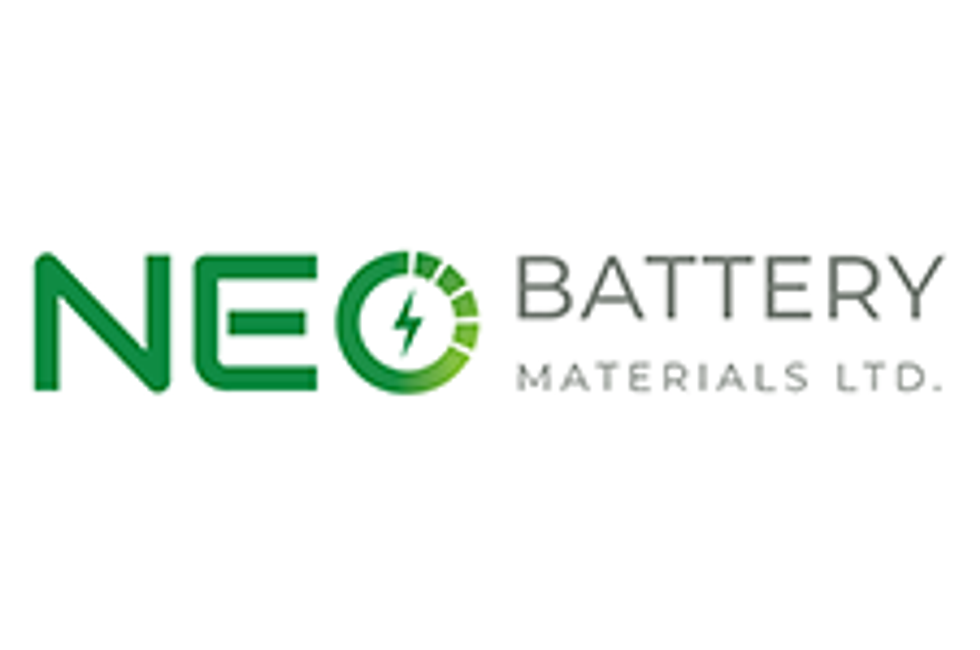- AustraliaNorth AmericaWorld
Investing News NetworkYour trusted source for investing success
- Lithium Outlook
- Oil and Gas Outlook
- Gold Outlook Report
- Uranium Outlook
- Rare Earths Outlook
- All Outlook Reports
- Top Generative AI Stocks
- Top EV Stocks
- Biggest AI Companies
- Biggest Blockchain Stocks
- Biggest Cryptocurrency-mining Stocks
- Biggest Cybersecurity Companies
- Biggest Robotics Companies
- Biggest Social Media Companies
- Biggest Technology ETFs
- Artificial Intellgience ETFs
- Robotics ETFs
- Canadian Cryptocurrency ETFs
- Artificial Intelligence Outlook
- EV Outlook
- Cleantech Outlook
- Crypto Outlook
- Tech Outlook
- All Market Outlook Reports
- Cannabis Weekly Round-Up
- Top Alzheimer's Treatment Stocks
- Top Biotech Stocks
- Top Plant-based Food Stocks
- Biggest Cannabis Stocks
- Biggest Pharma Stocks
- Longevity Stocks to Watch
- Psychedelics Stocks to Watch
- Top Cobalt Stocks
- Small Biotech ETFs to Watch
- Top Life Science ETFs
- Biggest Pharmaceutical ETFs
- Life Science Outlook
- Biotech Outlook
- Cannabis Outlook
- Pharma Outlook
- Psychedelics Outlook
- All Market Outlook Reports
Electric Vehicles to Drive Cleantech Innovations in 2016

A look at where the EV market is headed.
Cleantech is a complex industry. While it produces some of the most futuristic, exciting and relevant products on the market today, these cleantech innovations are sometimes more hype than substance, and can fail to gain traction with investors and consumers.
Electric vehicles (EVs) appear to be an ideal marriage of innovation, eco-consciousness and practicality. Indeed, industry observers like DreamTeamNetwork’s Jonathan Keim view them as one of the cleantech innovations that will push the market forward next year.
Natural market progression
Despite early hype, the cleantech market has proven to be a disappointment for many investors. But the industry began to climb out of its slump in 2015 and it’s shaping up to be a good year in 2016.
For investors, the question is whether they should be alarmed by these ups and downs. In an exclusive interview with the Investing News Network (INN), Keim reassured market participants that cleantech’s history follows a typical pattern — like many burgeoning industries, cleantech had to go through a natural struggle to gain its footing.
Keim believes those interested in cleantech investing should “think of the biopharma sector a few decades ago and understand that the same challenges face every nascent or not yet fully developed industry, irrespective of the obvious, immense potential. Escape velocity is on the table, it is just a matter of time.”
Growth for the future lies with EVs and HEVs
That time may be now. Speaking to INN, Keim cited Frost & Sullivan’s projection that the cleantech market will reach $1.3 trillion by 2020. What will make up the largest portion of this market? The report identifies EVs and neighborhood electric vehicles (NEV) as the largest portion of this market.
As Keim said, “EV proliferation, particularly in NEV or light vehicle types, will help accelerate overall industry focus for markets.”
Major cleantech innovations
Luxury car brands are coming to visibly embrace the EV, something which has enormous repercussions for the market as a whole. For instance, Jaguar, owned by Tata Motors (NYSE:TTM), has decided to compete in the third season of the all-electric Formula E racing series last December. This move is positive for the company on multiple levels: it will give Jaguar a space to innovate with EVs, while offering the brand excellent marketing potential. Competing in Formula E will illustrate the car’s exceptional power and range, two key qualities for EV consumers.
However, this move has greater implications as well. It illustrates the increasingly central position that EVs are coming to occupy. As the company’s engineering director Nick Rogers told Wired, “EVs will absolutely play a role in Jaguar Land Rover’s future product portfolio.”
Small- and mid-cap market participants
It’s not just luxury brands that are active in the EV market. Although Jaguar’s decision to enter the Formula E racing series puts a glamorous face on the EV and NEV markets, there are also many small-cap companies involved in the space. Take, for example, Sevcon (NASDAQ:SEV), a company with a $42.51 million market cap that designs microprocessor-based controls for zero-emission and hybrid EVs. These controls are used to change the speed and movement of vehicles, integrate specialized functions and prolong the shift life of the EV’s power source.
With a market cap of 442.84 million, Stoneridge (NYSE:SRI) is also engaged in the development of EV automotive body parts. The company has a wide array of operations, including the design, manufacture and sale of EV security alarms, convenience accessories, vehicle tracking devices and monitoring services, as well as in-vehicle audio and video devices. As of June 6, the company has seen a year to date increase of 10.2 percent. As these companies illustrate, there are a multitude of ways to invest in the EV and NEV spaces.
With these vehicles anticipated to occupy the majority of the cleantech market in 2020, now may be the perfect time for investors to stake a claim in this mobile market.
Follow us on Twitter @INN_Technology to keep up to date with the latest cleantech news.
This article was originally published on December 16, 2015 on Cleantech Investing News.
Securities Disclosure: I, Morag McGreevey, hold no direct investment interest in any company mentioned in this article.
Related reading:
2016 to Bring Big Changes for Cleantech Investors?
Outlook Reports
Featured Cleantech Investing Stocks
Browse Companies
MARKETS
COMMODITIES
| Commodities | |||
|---|---|---|---|
| Gold | 2314.79 | -8.90 | |
| Silver | 27.10 | -0.18 | |
| Copper | 4.48 | +0.02 | |
| Oil | 82.83 | -0.53 | |
| Heating Oil | 2.57 | -0.02 | |
| Natural Gas | 1.80 | -0.01 | |
Investing News Network websites or approved third-party tools use cookies. Please refer to the cookie policy for collected data, privacy and GDPR compliance. By continuing to browse the site, you agree to our use of cookies.




